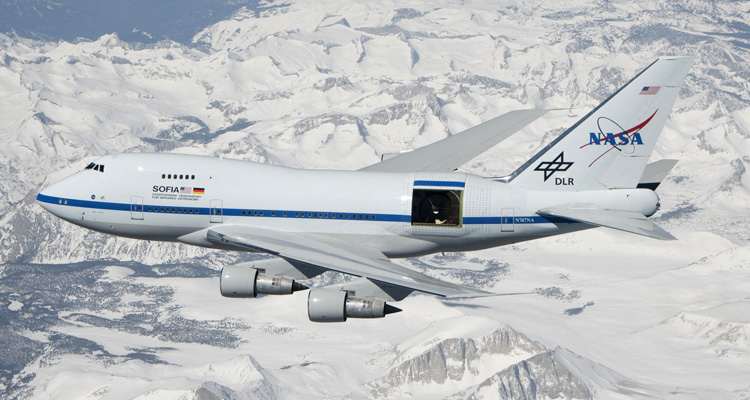NASA’s Stratospheric Observatory For Infrared Astronomy (SOFIA), the world’s largest airborne observatory, began operations last November. SOFIA is a Boeing 747SP fitted with a German-built, 17-ton, 100-inch-diameter infrared telescope in the rear of the aircraft.
“Modifying SOFIA from a passenger-carrying airliner to a flying observatory was a major aeronautical engineering challenge,” explained NASA’s SOFIA program manager Robert R. Meyer. “Moving the pressure bulkhead within the fuselage and preparing an aircraft of this size to operate with a telescope cavity opening that is more than 25 percent of the fuselage’s diameter in width were only two of the substantial tasks required in converting this aircraft into a world-class observatory.”
Operated jointly by NASA and the German Aerospace Agency, the flying observatory is beginning its planned 20-year life of astronomical observations. SOFIA is based at NASA’s Dryden Aircraft Operations Facility in Palmdale, Calif., and in full operations will fly, on average, three nights per week, eight to 10 hours per night for approximately 960 research hours per year.
SOFIA made its first test flight with the telescope cavity door fully open on December 18, 2009. The observatory’s “first light” flight, when the infrared telescope was used for the first time in flight, took place on the night of May 25-26, 2010. During that flight SOFIA demonstrated its versatility by imaging the planet Jupiter and the M82 galaxy, plus a set of bright stars that are difficult or impossible to see from the surface of the earth.





